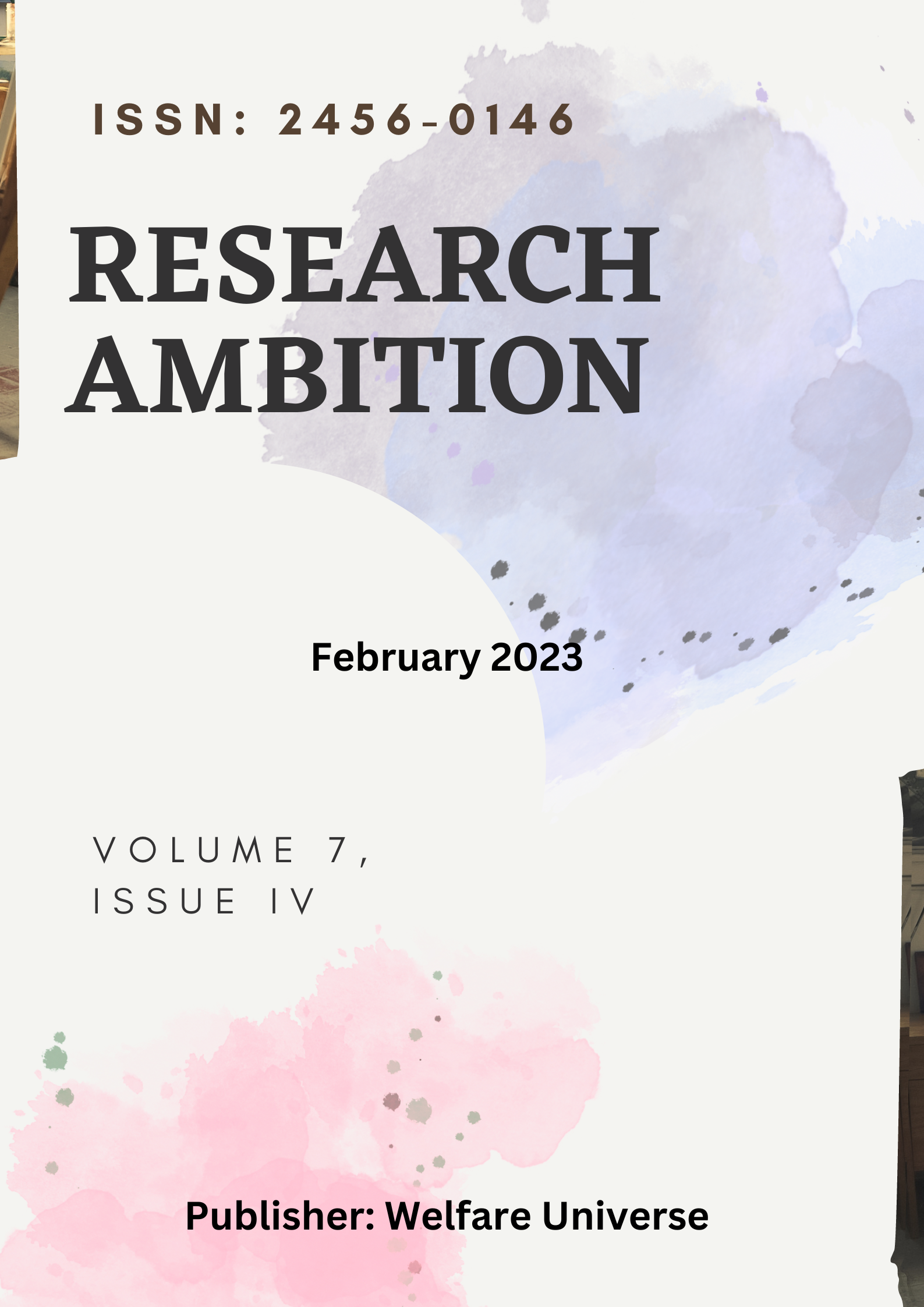Law relating to Domestic Violence and Women Protection in India: A Critical Study
DOI:
https://doi.org/10.53724/ambition/v8n2.05Keywords:
Gender justice, violence against women, women’s empowerment, Protection of Women from Domestic Violence Act, 2005 (PWDVA), Human RightsAbstract
Domestic violence remains one of the most pervasive and underreported forms of gender-based violence in India, affecting women across social, economic, and cultural backgrounds. Despite constitutional guarantees of equality, dignity, and personal liberty, women continue to face abuse within the private sphere of the home. This research critically examines the legal framework governing domestic violence in India, with a central focus on the DV Act, 2005, in conjunction with relevant provisions of the Indian Penal Code and constitutional protections under Articles 14, 15, and 21. The study adopts a doctrinal methodology to analyze the statutory provisions, judicial interpretations, and the practical challenges in the implementation of the law. It explores the roles of protection officers, magistrates, and support systems in delivering justice to survivors, and assesses whether the law adequately addresses not only physical violence but also emotional, economic, sexual, and psychological abuse. The research also identifies lacunae in the law’s enforcement, including issues of delayed justice, lack of awareness, patriarchal bias, and institutional insensitivity. By critically engaging with landmark judgments, legal commentaries, and governmental reports, the study offers insights into how the law can be strengthened to provide more effective protection and empowerment for women. The research concludes by recommending policy reforms, capacity building, and increased socio-legal awareness as key steps toward eliminating domestic violence and ensuring substantive gender justice in India.
References
Protection of Women from Domestic Violence Act, 2005, No. 43, Acts of Parliament, 2005 (India).
Indian Penal Code, 1860, Act No. 45 of 1860 (India).
Constitution of India, 1950.
Convention on the Elimination of All Forms of Discrimination Against Women (CEDAW), 1979, United Nations General Assembly.
Agnes, F. (1999). Law and gender inequality: The politics of women's rights in India. Oxford University Press.
Dhanda, A., & Parashar, A. (Eds.). (2009). Engendering law: Essays in honour of Lotika Sarkar. Eastern Book Company.
Sagade, J. (2005). Child marriage in India: Socio-legal and human rights dimensions. Oxford University Press.
Diwan, P., & Diwan, P. (2014). Women and legal protection. Deep & Deep Publications.
Ministry of Women and Child Development. (2020). Annual report 2019–20. Government of India. https://wcd.nic.in
National Crime Records Bureau. (2022). Crime in India 2021: Statistics on crimes against women. Ministry of Home Affairs, Government of India. https://ncrb.gov.in
Law Commission of India. (2015). Report on women and domestic violence. Government of India.
UN Women. (2019). Handbook on legislation on violence against women. https://www.unwomen.org
Parashar, A. (2002). Domestic violence law in India: A feminist approach to women's human rights. Sociological Bulletin, 51(1), 59–75. https://doi.org/10.1177/0038022920020103
Tripathi, S. (2016). The Protection of Women from Domestic Violence Act, 2005: A critique. Indian Bar Review, 43(2), 115–132.
Menon, N. (2010). Violence against women in India: A legal perspective. Journal of South Asian Studies, 26(3), 423–441.
Choudhury, T. (2021). Domestic violence and the Indian judiciary: A study of PWDVA implementation. International Journal of Law and Policy Review, 10(2), 33–50.
Sharma, B. (2018). Gender-based violence and the inadequacy of legal response in India. Asia-Pacific Journal on Human Rights and the Law, 19(1–2), 78–96. https://doi.org/10.1163/15718158-01901004
Kumar, A. (2014). Legal protection for women victims of domestic violence: An Indian scenario. Journal of Law and Conflict Resolution, 6(1), 1–7.
Raj, A., & Silverman, J. G. (2002). Violence against immigrant women: The roles of culture, context, and legal response. Violence Against Women, 8(12), 1431–1449. https://doi.org/10.1177/107780102237007
Sharma, K. (2020). Implementation gaps in the Protection of Women from Domestic Violence Act: An analysis. Indian Journal of Criminology, 48(1), 55–68.
Desai, M. (2006). Protecting women from domestic violence: The role of law. Economic and Political Weekly, 41(48), 5029–5033.
Srivastava, R. (2019). Legal responses to domestic violence in India: A critical appraisal. International Journal of Legal Studies and Research, 8(4), 102–117.
Kumar, Ramesh, (2022). State Human Rights Commissions as Enforcement System in India: A Critical Appraisal. Research Inspiration. 7 (2), 1-17. doi: https://doi.org/10.53724/inspiration/v7n2.02.
Agarwal, S. (2017). Domestic violence and access to justice for Indian women. International Journal of Law and Society, 4(2), 67–79.
Rao, S. (2004). Domestic violence in India: A review of research and legal mechanisms. Indian Journal of Gender Studies, 11(1), 75–90. https://doi.org/10.1177/097152150401100104
Bhattacharya, R. (2016). The PWDVA, 2005: Challenges in implementation. NUJS Law Review, 9(3), 455–472.
Kumar, Ramesh. Verma Kumar, Rohit. (2022). Meninism and Preconceived Ideology with specific Indian Dimension of Human Rights in Today’s Changing Globalized Scenario: A Critical Appraisal. Legal Research Development. 7 (1) 27-29.
Singh, P. (2013). The role of judiciary in interpreting domestic violence laws. Journal of the Indian Law Institute, 55(2), 245–261.
Banerjee, S. (2015). Women’s rights and domestic violence in India: A legal analysis. South Asian Legal Studies Journal, 2(1), 15–27.
Kumar, Ramesh. Verma Kumar, Rohit. (2022). Human Rights of Men in the World of Globalization-An Essence of Time: A Critical Appraisal. Jai Maa Saraswati Gyandayini. 8 (2), 1-6. https://doi.org/10.53724/jmsg/v8n2.02.
Khan, N. (2012). Domestic violence against Muslim women in India: A legal perspective. Journal of Muslim Minority Affairs, 32(3), 335–352. https://doi.org/10.1080/13602004.2012.727295
Mahajan, A. (1990). Instigators of domestic violence: A sociological outlook. Social Action, 40(3), 273–282.
Ally Abubakar, Tariq, Kumar, Ramesh (2024). Implementation of Women’s Human Rights in Dar Es Salaam with Special Reference to Domestic Violence: A Critical Appraisal. Revista de Gestao Social e Ambiental. 18 (5), 1-14. doi: https://doi.org/10.24857/rgsa.v18n5-038.
Ghosh, B. (2007). Trafficking in women and children in India: Nature, dimensions and strategies for prevention. The International Journal of Human Rights, 11(1-2), 105–126.
Patel, V. (2005). Domestic violence against women: Review of Indian laws and policies. Indian Journal of Social Work, 66(1), 31–45.
Narayan, U. (1995). The project of feminist epistemology: Perspectives from a nonwestern feminist. Gender and Society, 9(3), 330–354.
Downloads
Published
How to Cite
Issue
Section
License

This work is licensed under a Creative Commons Attribution-NonCommercial 4.0 International License.
















